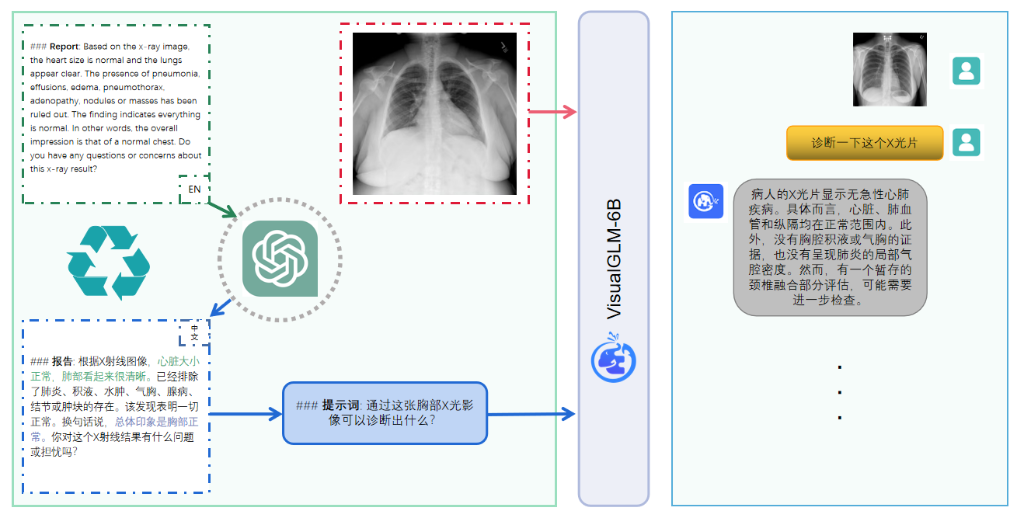患者监测预警新策略:人工智能算法的应用
发布时间: 2024-09-01 22:01:28 阅读量: 76 订阅数: 36 


# 1. 人工智能在患者监测中的应用概述
## 1.1 智能化患者监测的意义与价值
随着科技的进步,人工智能(AI)在医疗领域的应用越来越广泛,特别是在患者监测这一重要环节上,AI技术正逐步改变传统方法,提高监测的效率和准确性。AI在患者监测中的应用,不仅可以实时跟踪患者的生理状态,还可以通过分析历史数据预测患者的未来健康趋势,为医生提供辅助决策的科学依据。
## 1.2 AI患者监测技术的分类
目前,AI在患者监测中的应用技术主要分为两大类:一类是基于规则和预设阈值的传统监测技术,另一类是基于数据驱动的智能监测技术。智能监测技术通过深度学习、模式识别等方法,能够从大量的医疗数据中提取有用信息,发现疾病早期征兆,提供个性化和精准化的监测服务。
## 1.3 应用案例及其影响
诸如智能心电图(ECG)分析、智能血糖监测等AI应用案例,正在逐渐进入我们的视野。这些案例不仅提高了疾病诊断的准确性和效率,还减少了医疗错误和相关并发症的风险。对于医疗机构而言,AI监测技术的应用有助于降低人力成本,提升服务品质,为患者带来更好的医疗体验。
在接下去的章节中,我们将详细探讨人工智能算法的基础知识,以及它们在实际患者监测系统中的实现过程,包括构建、训练和优化模型的方法。通过这些深入的分析,我们可以更好地理解AI在患者监测中的运作机制以及如何应用这些技术来提升医疗服务质量。
# 2. 人工智能算法基础
### 2.1 人工智能算法的分类
人工智能算法可以根据学习方式被分为监督学习、无监督学习和强化学习。这一部分将详细解释每种算法的定义、应用场景及运作方式。
#### 2.1.1 监督学习算法
监督学习算法是人工智能中一个重要的子领域,它涉及从标记的数据中学习。在监督学习中,模型通过输入(特征)和输出(标签)对进行训练。学习算法的目的是寻找一个能够将输入映射到输出的函数。监督学习算法的使用案例包括垃圾邮件分类、信用评分以及医疗诊断。
下面是一个简单的逻辑回归算法的Python示例代码,用于分类手写数字:
```python
from sklearn.datasets import load_digits
from sklearn.linear_model import LogisticRegression
from sklearn.model_selection import train_test_split
from sklearn.metrics import accuracy_score
# 加载数据集
digits = load_digits()
X, y = digits.data, digits.target
# 将数据集分为训练集和测试集
X_train, X_test, y_train, y_test = train_test_split(X, y, test_size=0.25, random_state=42)
# 创建逻辑回归模型
model = LogisticRegression(max_iter=1000)
# 训练模型
model.fit(X_train, y_train)
# 预测测试集的结果
predictions = model.predict(X_test)
# 计算准确率
print(accuracy_score(y_test, predictions))
```
在上述代码中,`load_digits` 函数用于导入手写数字数据集,`LogisticRegression` 是一个逻辑回归模型。使用 `fit` 方法来训练模型,并使用 `predict` 方法进行预测。最后,通过比较测试集的真实标签和预测标签,我们使用 `accuracy_score` 来计算模型的准确率。
#### 2.1.2 无监督学习算法
无监督学习算法不需要标记的训练数据,它处理的是未标记的数据。算法试图找到数据中的隐藏结构或模式。无监督学习算法包括聚类、降维和异常检测等。聚类算法的例子有K-means、层次聚类等。
接下来是使用Python的K-means算法对未标记的数据进行聚类的示例:
```python
from sklearn.datasets import make_blobs
from sklearn.cluster import KMeans
# 生成模拟数据集
X, _ = make_blobs(n_samples=300, centers=4, cluster_std=0.60, random_state=0)
# 应用K-means算法
kmeans = KMeans(n_clusters=4)
kmeans.fit(X)
# 使用标签分配给每个样本点
labels = kmeans.labels_
# 打印每个数据点的标签
print(labels)
```
在上述代码中,`make_blobs` 函数用于生成模拟的聚类数据集,`KMeans` 是一个无监督学习算法,用于数据的聚类分析。通过调用 `fit` 方法,算法被训练并生成了数据点的聚类标签。
#### 2.1.3 强化学习算法
强化学习是机器学习的一个分支,它关注如何基于环境中的反馈来做出决策。强化学习不同于监督学习和无监督学习之处在于,它通过奖励(正或负)来优化决策过程。强化学习算法的典型例子包括Q学习和策略梯度方法。
下面展示了使用Q学习算法解决一个简单的库存管理问题:
```python
import numpy as np
# 定义状态空间和动作空间
states = np.arange(0, 101)
actions = np.arange(0, 21)
# 初始化Q表
Q_table = np.zeros((len(states), len(actions)))
# 设置学习参数
alpha = 0.1
gamma = 0.9
epsilon = 0.1
def policy(state):
if np.random.uniform(0, 1) < epsilon:
return np.random.choice(actions)
else:
return actions[np.argmax(Q_table[state, :])]
for episode in range(1000):
state = np.random.choice(states)
while state != 0:
action = policy(state)
next_state = state - action
reward = 1 if next_state >= 0 else 0
Q_table[state, action] = Q_table[state, action] + alpha * (reward + gamma * np.max(Q_table[next_state, :]) - Q_table[state, action])
state = next_state
print(Q_table)
```
在上述代码中,我们初始化一个Q表来存储状态和动作的价值函数,并定义了一个策略函数 `policy` 来选择动作。一个典型的强化学习过程涉及状态转移和奖励的获得,经过多次迭代,通过更新Q表中的值以获得最优策略。
### 2.2 机器学习模型的构建与训练
构建和训练机器学习模型是将理论转化为实践的重要步骤。这一部分将详细解释模型构建的前处理、训练过程以及评估优化策略。
#### 2.2.1 数据预处理和特征提取
数据预处理是机器学习中一个关键步骤,目的是确保模型能够从数据中有效地学习。预处理步骤通常包括数据清洗、规范化、特征选择和提取。
一个常见的特征提取例子是使用主成分分析(PCA)进行降维:
```python
from sklearn.datasets import load_iris
from sklearn.decomposition import PCA
# 加载数据集
iris = load_iris()
X = iris.data
y = iris.target
# 应用PCA算法以减少数据到2个主成分
pca = PCA(n_components=2)
X_pca = pca.fit_transform(X)
# 输出新数据集的维度
print(X_pca.shape)
```
在上述代码中,`load_iris` 函数用于加载著名的鸢尾花数据集,`PCA` 是一个降维技术,用于减少数据特征的数量,同时尽可能保留数据的原始信息。
#### 2.2.2 模型的选择和训练过程
选择正确的模型对于解决问题至关重要。在训练之前,通常需要根据问题的性质来选择一个或多个候选模型。这一步涉及到基础模型的选择,如线性回归、决策树等。接着是训练模型,这一过程涉及到将数据输入模型并迭代调整模型参数。
以支持向量机(SVM)为例,下面展示了如何使用scikit-learn进行模型训练:
```python
from sklearn import datasets
from sklearn.model_selection import train_test_split
from sklearn.preprocessing import StandardScaler
from sklearn.svm import SVC
# 加载数据集
iris = datasets.load_iris()
X = iris.data
y = iris.target
# 数据集分割
X_train, X_test, y_train, y_test = train_test_split(X, y, test_size=0.3, random_state=42)
# 数据标准化
scaler = StandardScaler()
X_train = scaler.fit_transform(X_train)
X_test = scaler.transform(X_test)
# 训练SVM模型
model = SVC(kernel='linear')
model.fit(X_train, y_train)
# 预测测试集
y_pred = model.predict(X_test)
# 打印准确率
print(f'Accuracy: {model.score(X_test, y_test) * 100:.2f}%')
```
在上述代码中,`train_test_split` 被用来划分数据集,`StandardScaler` 用于数据标准化,而 `SVC` 是支持向量机的实现。通过 `fit` 方法来训练模型,并用 `pre
0
0





